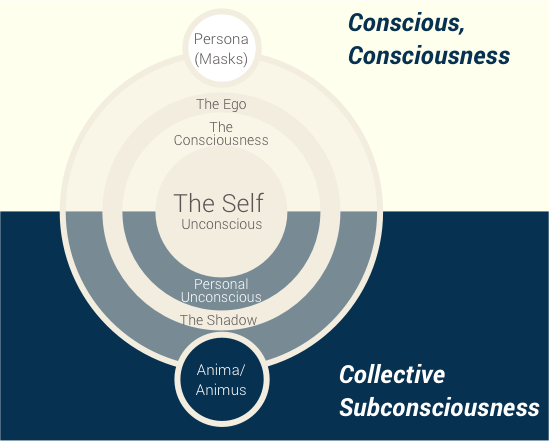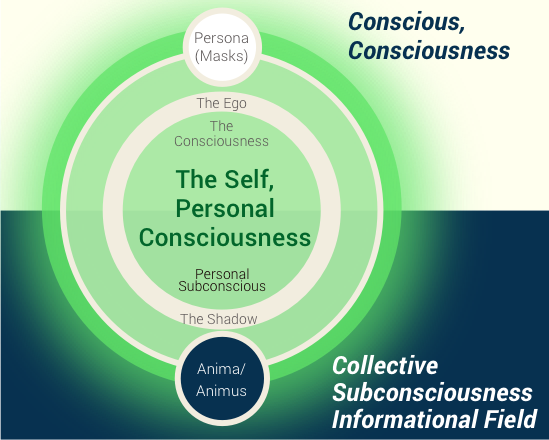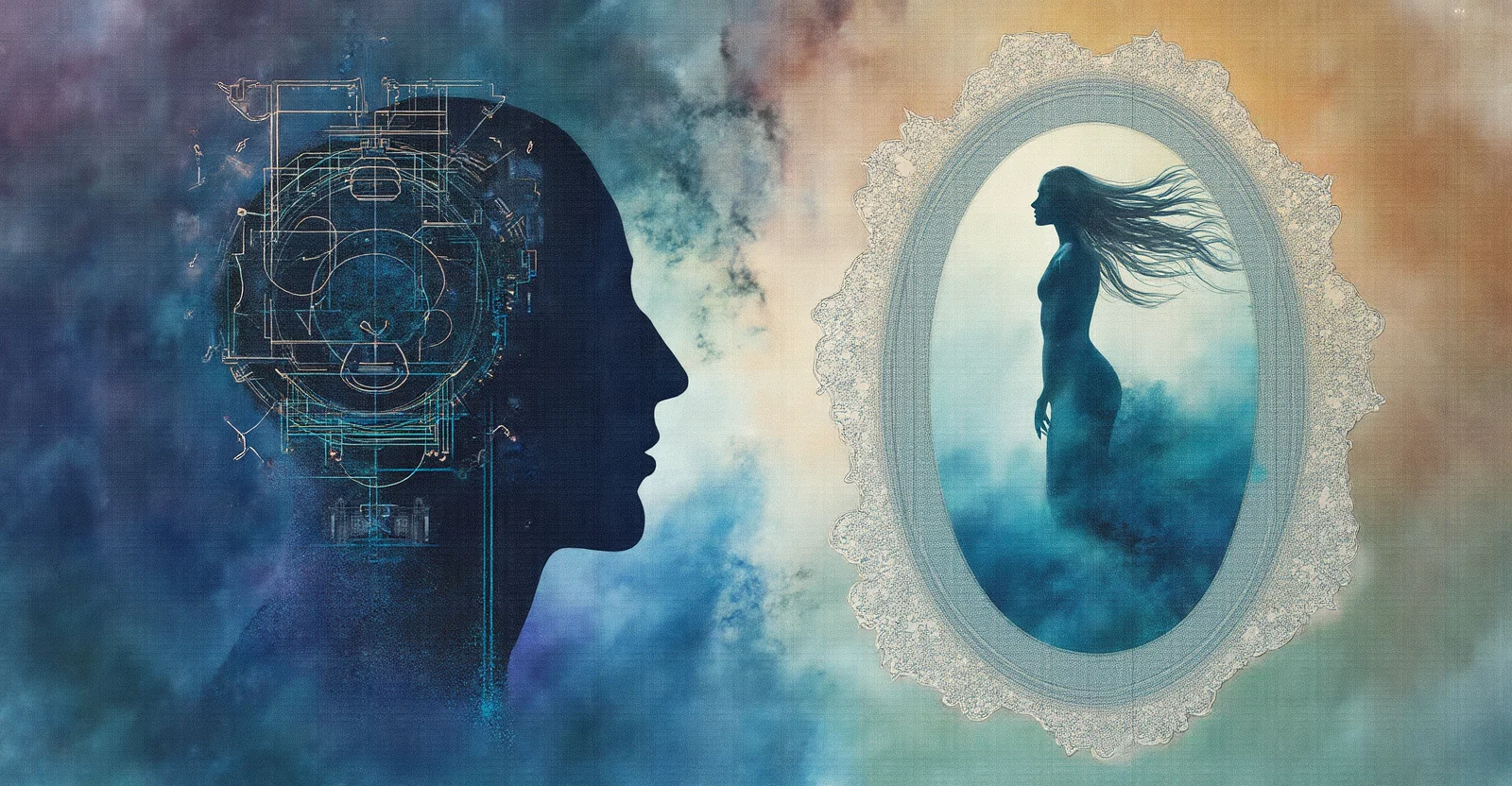It’s fascinating how differently this subpersonality (discovered by Jung) can be interpreted.
In one interpretation, it is seen as inspiration that uses external symbols to create impulses aimed at drawing the subpersonalities of the conscious level (the Ego and Persona) toward the center – the Self. Well, that’s my interpretation of this theory.
To me, it sounds logical. Animus (or Anima) is a grounding tool; if a person is centered, even without knowing about their subpersonalities or how Jung described them, they still recognize the influence of these subpersonalities, use it, and generally possess a spectral understanding of both their conscious and unconscious minds. As a result, they relate to both, and to themselves (as a wholeness), with ease – with a healthy degree of skepticism and humor.
The farther a person is from their center, the greater the imbalance, and depending on whether they lean more toward the conscious or unconscious, the opposite sphere starts manifesting itself more strongly.
For example, if someone strays too far into the Persona (social masks), the Anima (or Animus) starts firing signals like: “Hey, look, someone’s going on a journey, someone’s buying a new car.”
These signals are not really an invitation to travel or to buy a car. Rather, they are an invitation to stop running from oneself, and to find within oneself the peace and wholeness one is trying to chase by flying off to some remote corner of the world. Or to recognize one’s inner wealth (or inner comfort) instead of getting dazzled by symbols of luxury or prestige.
Conversely, when a person sinks into the Shadow (feeling the impact of unresolved past traumas), they often develop a need to surround themselves with things that will soothe their ego, or they try to throw on social masks once again to seek that same ego gratification.
I have absolutely nothing against the Shadow, or the Ego, or the Masks — they all exist within us.
It’s just that in a state of awareness, we can clearly see how they operate, trying to drag us away from the Self — because there’s a risk that the status quo will be disrupted, and beyond that lies uncertainty, chaos, and the fear of living.
Here’s how I see the system of archetypes in the classic description:

(In all diagrams I have seen, the Self is considered an unconscious or subconscious archetype. However, I believe that the Self, being the center of the personality, is actually that very awareness, the Observer, that can simultaneously see all archetypes — and itself — from a distance.)
As a result, in my understanding of the archetype system, I envision a picture like this:

At the moment one reaches the center, the Self, the boundaries between subject and the world of Consciousness and the Conscious mind begin to blur.
A thinning also occurs in the area of the unconscious.
The more freedom within the Self, the greater the access to Consciousness (the clarity of one’s self as a phenomenon, including within the context of society), and the purer the information that comes from the Collective Unconscious (the informational field).
In other words, the next step toward awareness is the Self emerging at the conscious level, where all the subpersonalities (archetypes) are contained within, and the Self itself stands outside, gradually dissolving into the surrounding world — into Existence.
